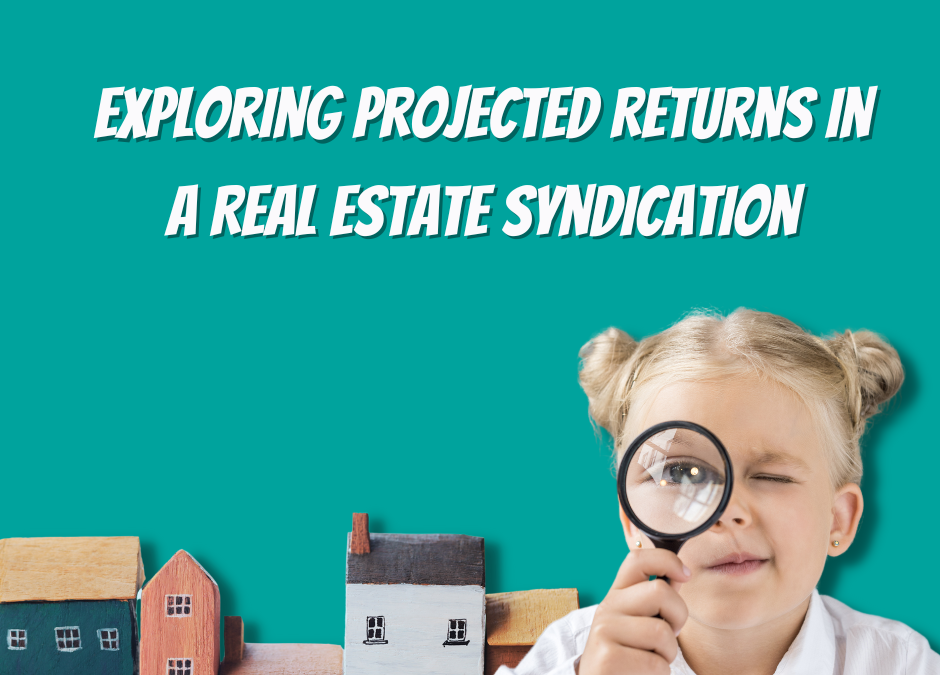We will be exploring projected returns in a real estate syndication. One of the most common questions that we get asked from investors is, “If I were to invest $50,000 with you today, what kinds of returns should I expect?”
We understand. You want to know how hard your money can work for you through passive real estate investments, and how these investments stack up to the returns you’re getting through other investments you are in.
In order to help answer that question, please note, we are talking about projected returns. These returns are projections, based on our analyses and best assumptions, but they are not guaranteed. There is always risk associated with any investment. The following examples are meant to provide some ideas to get you started.
In this article, we’ll explore the 3 main criteria you should look into when evaluating projected returns on a potential real estate investment deal.
Three Main Criteria
Each real estate investment summary contains a lot of useful data. We suggest you focus on these 3 main concepts:
- Projected hold time
- Projected cash-on-cash returns
- Projected profits at the sale
Projected Hold Time: ~5 Years
Projected hold time is the number of years the asset is planned to be held before selling it. What this means for you is that this is the amount of time that your capital would be invested in the deal.
A hold time of around five years is beneficial for a few reasons:
- Plenty can change in just five years. This hold time allows for enough time to earn healthy returns, but not so much that you are in a whole new season of life before the sale.
- Considering market cycles, five years is a modest stint in which to invest, make improvements, allow appreciation, and exit before it’s time to remodel again.
- A five-year projected hold provides a buffer between the estimated sale and the typical seven to ten-year commercial loan term. If the market softens at the 5-year mark, we can opt to hold the asset for a longer period of time, allowing the market to rebound.
Projected Cash-on-Cash Returns: 8% Per Year
Next, consider cash-on-cash returns. This is also known as cash flow or passive income. Cash-on-cash returns are what remain after vacancy costs, mortgage, and expenses. It’s the pot of money that gets distributed to investors.
If you invested $100,000, and earned eight percent per year, the projected cash flow would be about $8,000 per year or about $667 per month. That’s $40,000 over the five-year hold.
Just for kicks, notice the same value invested in a “high” interest savings account (earning 1%) over five years would earn a measly $5,000.
That’s a difference of $35,000 over the span of 5 years!
Given the current market conditions and increased interest rates, we are finding that cash flows are getting compressed some. Often the preferred returns may not be paid out in their entirety every year and will get caught up upon refinance or sale. This is an important point to note if cash flow is important to you and your current finances.
Projected Profit Upon Sale: ~50-60%
Perhaps the largest puzzle piece is the projected profit upon sale. Typically, the goal is about 50-60% in profit at the sale in year for a value-add offering.
Within five years, the units have been updated, there is a new tenant mix and rents accurately reflect market rates. Since commercial property values are based on the amount of income generated, these improvements, along with market appreciation, typically lead to a substantial increase in the overall value of the asset. This leads to sizable profits upon sale of the asset.
Summing It All Up
Simple enough, right? Typically, in the offerings we have available to our investors, we are looking for the following:
- 5-year hold
- 8% annual cash-on-cash returns
- 50-60% profits upon sale
That’s not always possible in this market but that is our goal. So, we either hit the goal or get as close to it as possible for our investors. And if an opportunity is way off base, we pass on it because it doesn’t meet our criteria. And yes, this happens all day every day. We spend a lot of time looking for offerings we are proud to present to our investors.
So, if you stick to the previous example, you’d invest $100,000, hold for 5 years, collect $8,000 per year in cash flow distributions paid out monthly (a total of $40,000 over 5 years), and earn $60,000 in profit at the sale.
This results in $200,000 at the end of 5 years – $100,000 of your initial investment, and $100,000 in total returns.
Double your money in just 5 years? I bet you can’t find a savings account like that!
Contact Ohana Investment Partners HERE

